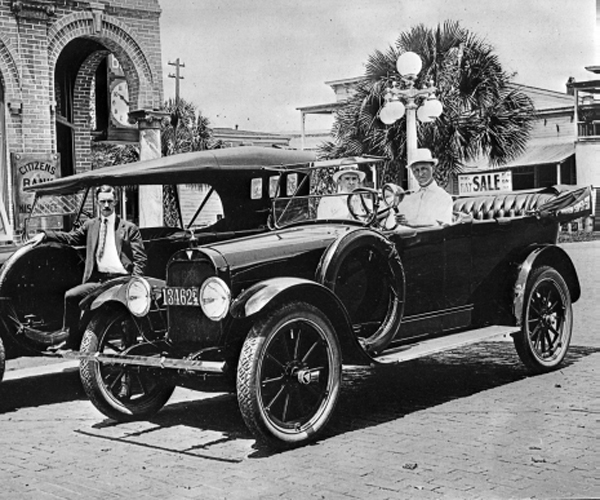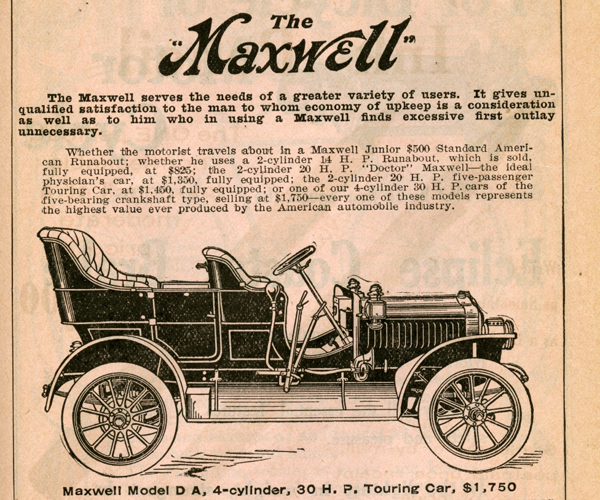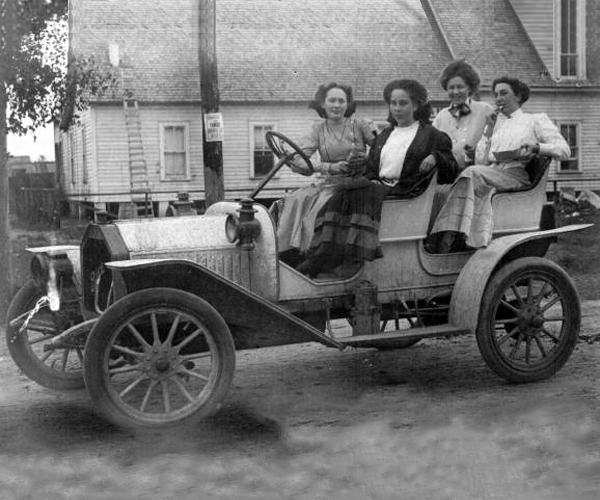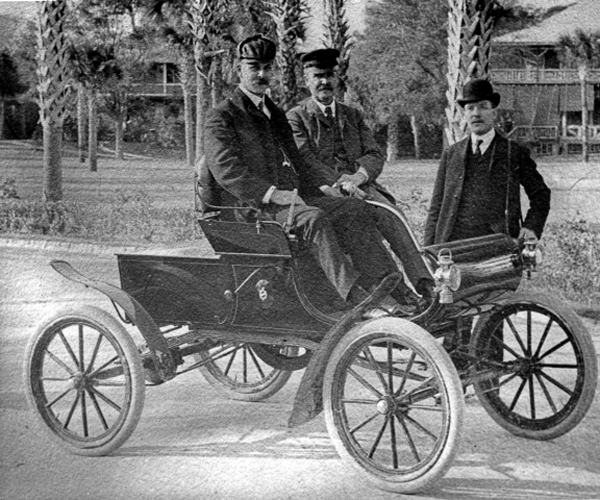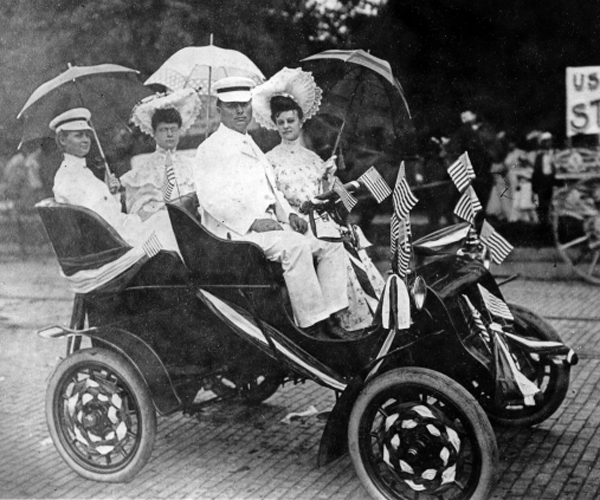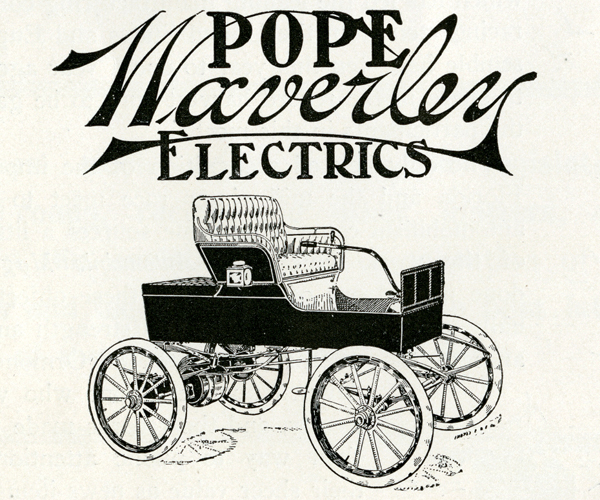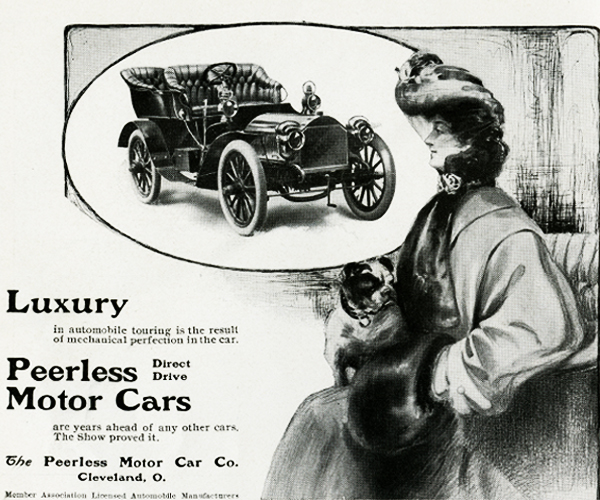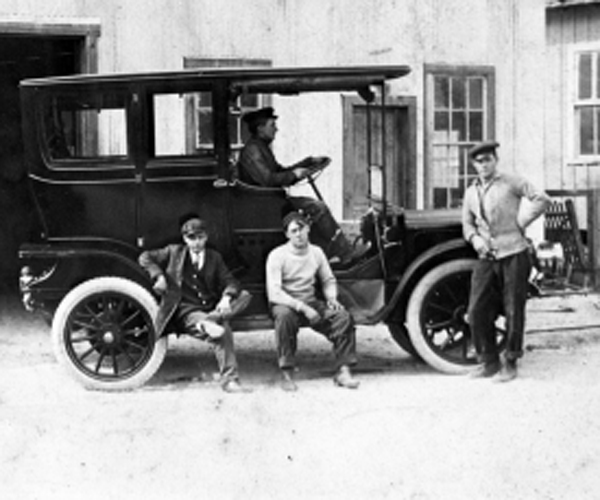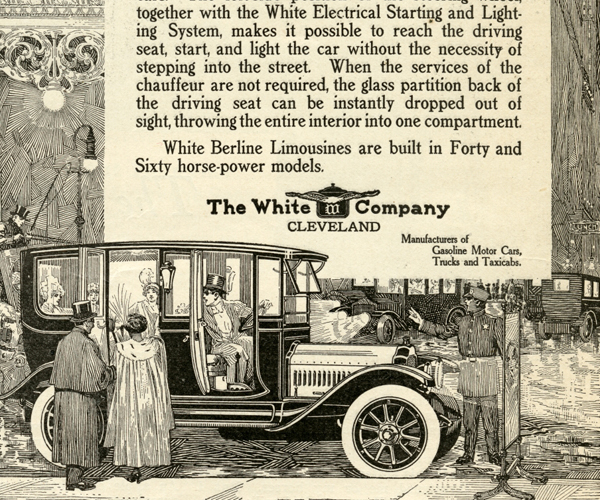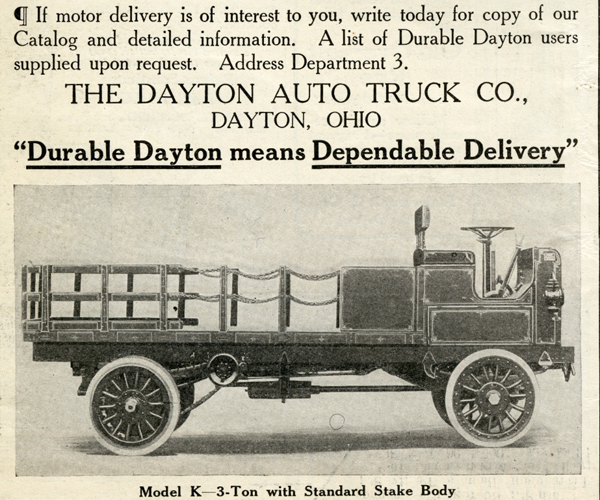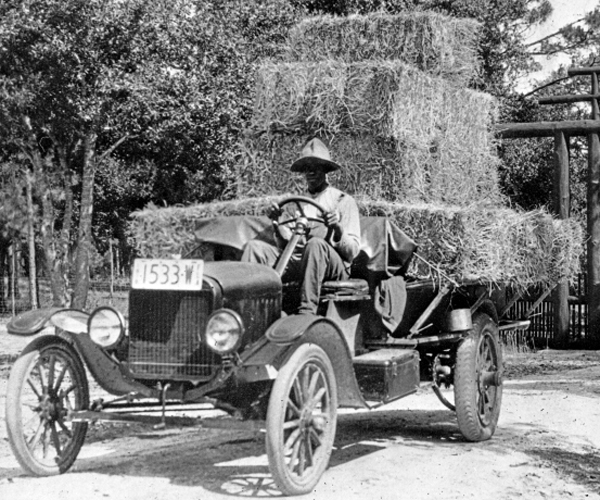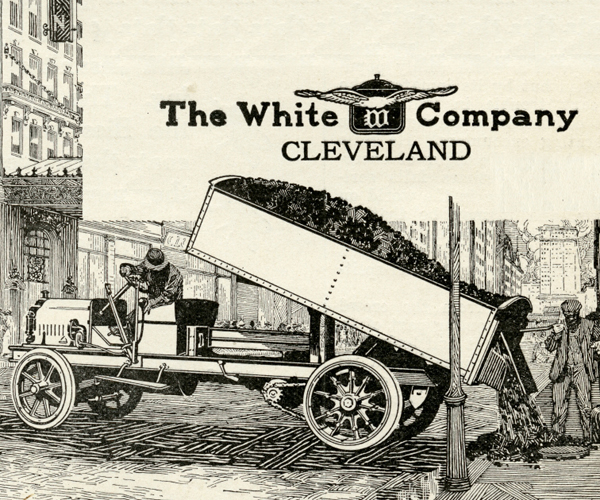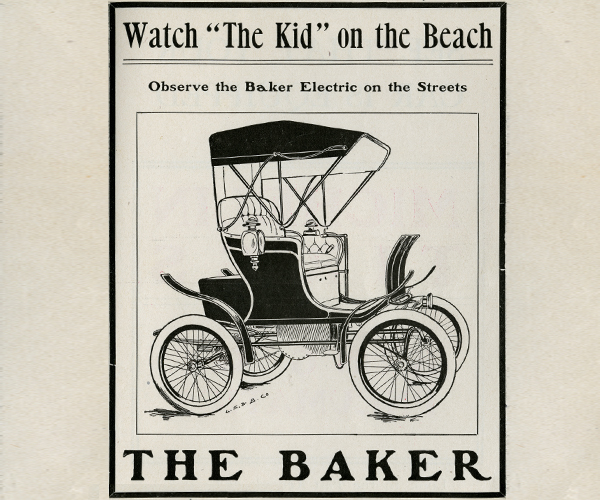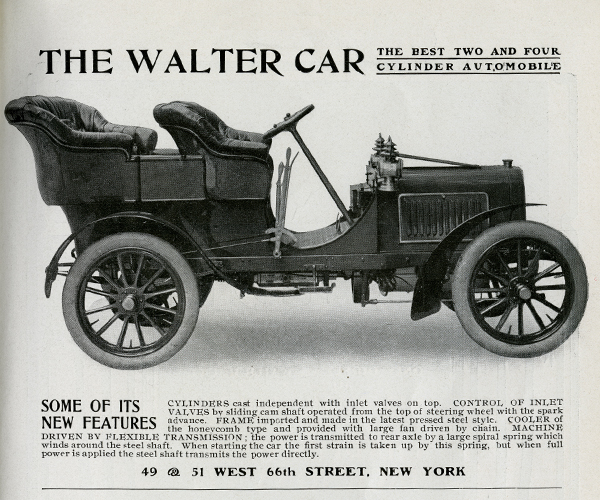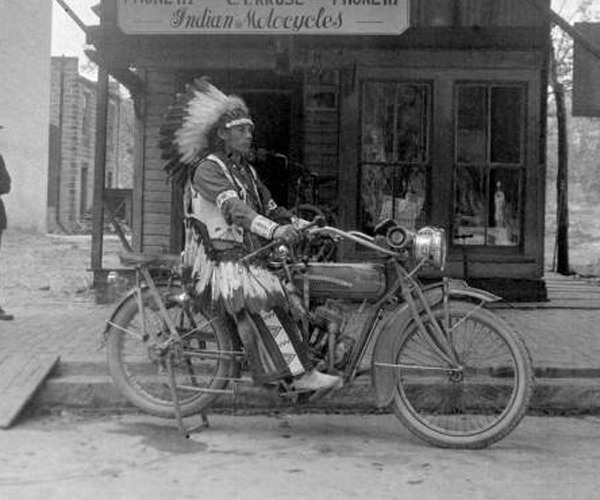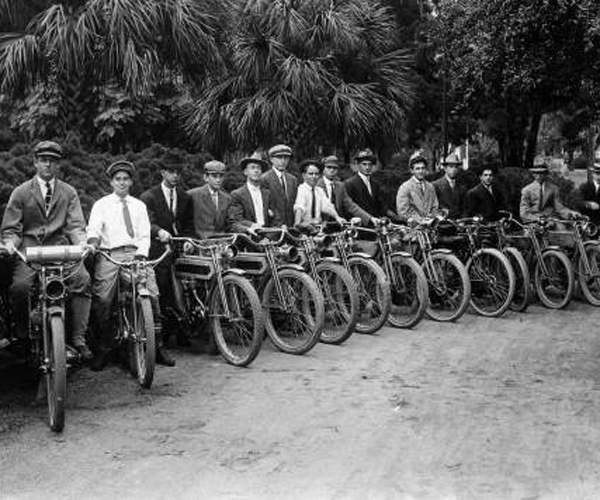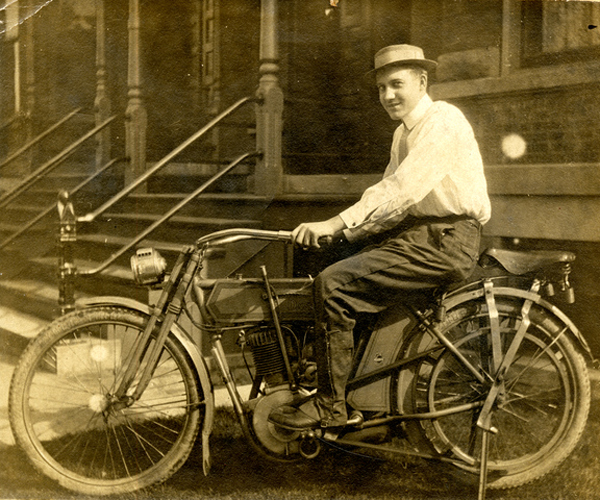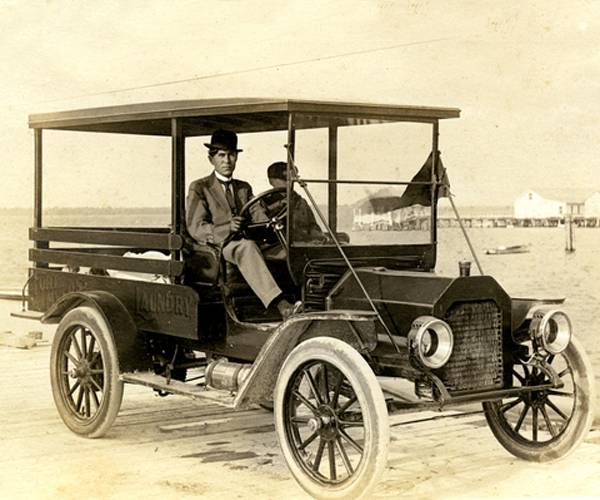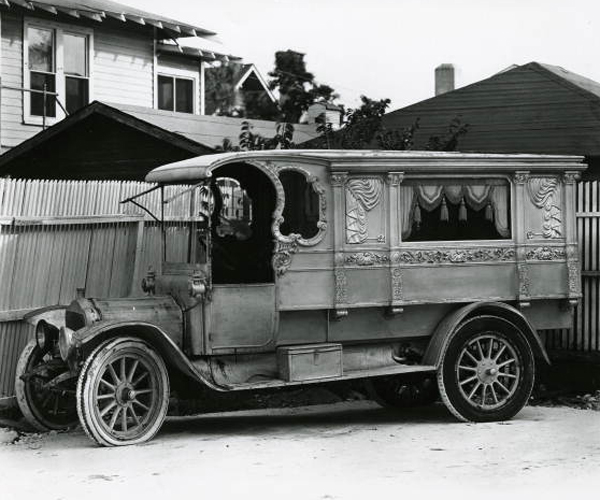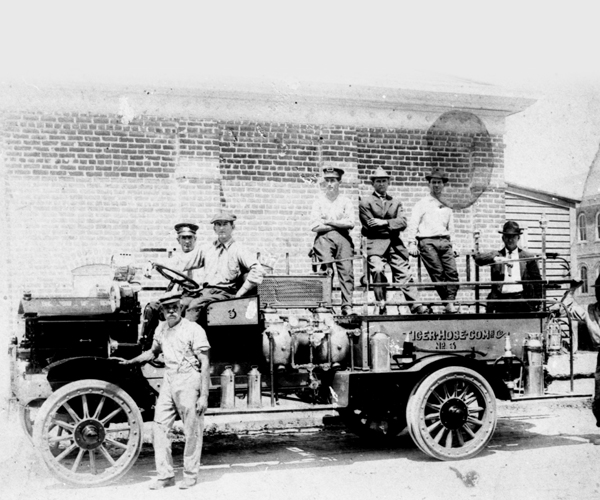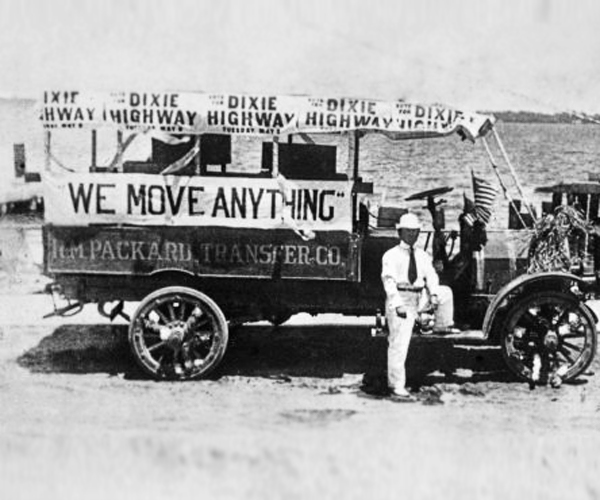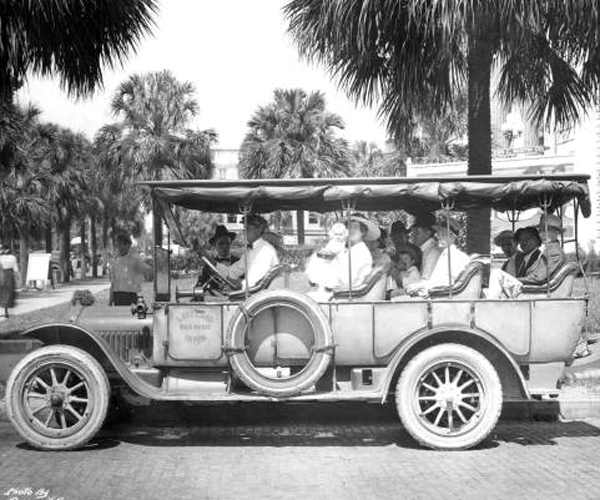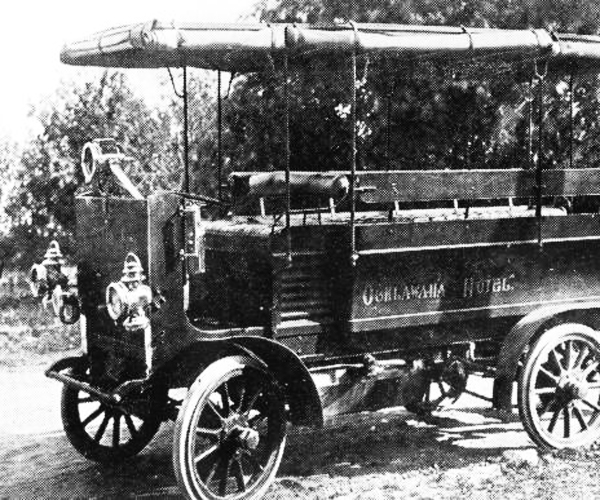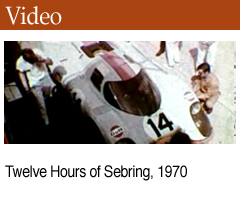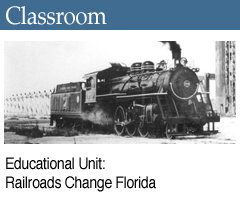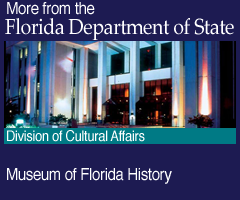Early Auto Registrations, 1905-1917
Showroom
Between 1905 and 1917, Floridians and visitors registered automobiles from over 300 distinct manufacturing companies in a variety of models and styles.
The record books in this collection provided space for the registrar to note the "style" of the vehicles being registered. The registrar's interpretation of "style" varied; in some cases he or she noted a specific model name for the vehicle, while in other instances a more general style of vehicle was listed. In some of the earliest records, the registrar sometimes even described a vehicle's "style" by indicating whether the automobile was powered by steam, gasoline, or electricity.
This page provides examples of the most common vehicle styles listed throughout the collection. All of these images are drawn from the Florida Photographic Collection and the Florida Broadsides & Ephemera Collection on Florida Memory. Click any image to enlarge it and learn more about the automobile it depicts.
Touring Car
The touring car or Phaeton was one of the most common styles of automobile in the early decades of the 20th century. Nearly every auto manufacturer offered a vehicle in this style. Touring cars generally were denoted by an open body seating four or more people. The standard-size Model T Ford is one of the most recognizable examples of this style.
Runabout
Runabouts were one of the earliest varieties of automobiles, often referred to as "horseless carriages." They were typically characterized by a lack of doors, weatherproofing, or windshield. The engine was generally located underneath the seat, and in many cases it was powered by electricity. The Oldsmobile curved-dash vehicle, the Model A Ford (also known as the Fordmobile), and early Locomobile models followed the runabout style. In later years, the term "runabout" was used interchangeably with "roadster."
Luxury Cars & Limousines
The term "limousine" denotes a vehicle with compartments separating the driver from the passengers. Most early limousine were not of the distinctive "stretch" variety so common today. Landaulets, another variety of luxury car, provided an open roof for the rear passengers. Peerless, Pierce-Arrow, Packard, and Darracq were some of the most common makers of luxury cars in the early 20th century. The price for one of these vehicles was sometimes as much as ten times the price of a standard touring car.
Trucks
Truck manufacturers generally advertised their vehicles according to their pulling capacity in tons. Some were fitted with special attachments such as tiltable beds. The White Company, International Harvester, Knox, Packard, and Reliance were some of the most popular truck makers in the early 20th century.
Electric, Steam, and Gasoline
The gasoline-fueled internal combustion engine ultimately became America's motive power of choice, but not before steam and electric cars had an opportunity to compete. Electric car manufacturers emphasized the smooth, quiet ride their products provided, while steam car makers claimed to produce a safer, quieter vehicle whose primary requirement (water) could be found anywhere. Gasoline eventually won out, however, as the most economic and convenient fuel source.
Motorcycles
Manually propelled bicycles had just become popular when the automobile came onto the scene at the end of the 19th century. The early motorcycle grew out of an attempt to merge the power of the automobile with the personal freedom and maneuverability of the bicycle. In fact, a number of early motorcycle manufacturers, including Hendee and Excelsior, started out as bicycle makers.
Special Purpose Vehicles
When the so-called "horseless carriage" first emerged, most people viewed it as more of a curiosity or plaything for the wealthy. Quickly, however, creative business owners and auto enthusiasts found ways to modify the automobile for a wide range of uses. Many of the earliest hearses, delivery trucks, and buses were merely stripped-down cars with special attachments added after market. Increasingly, however, auto makers began offering these kinds of vehicles ready-made. Other companies specialized in making the necessary modifications to existing cars.

 Listen: The World Program
Listen: The World Program